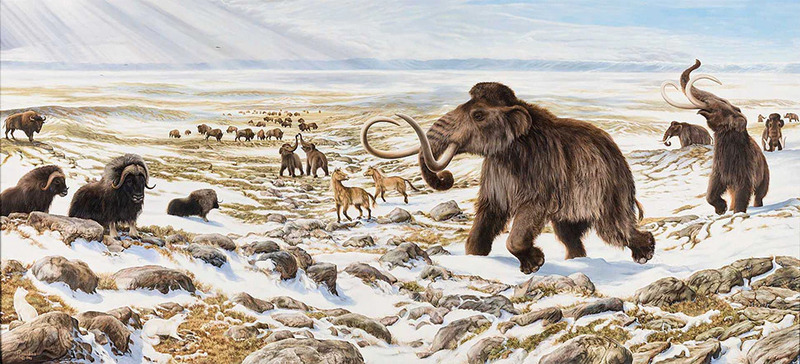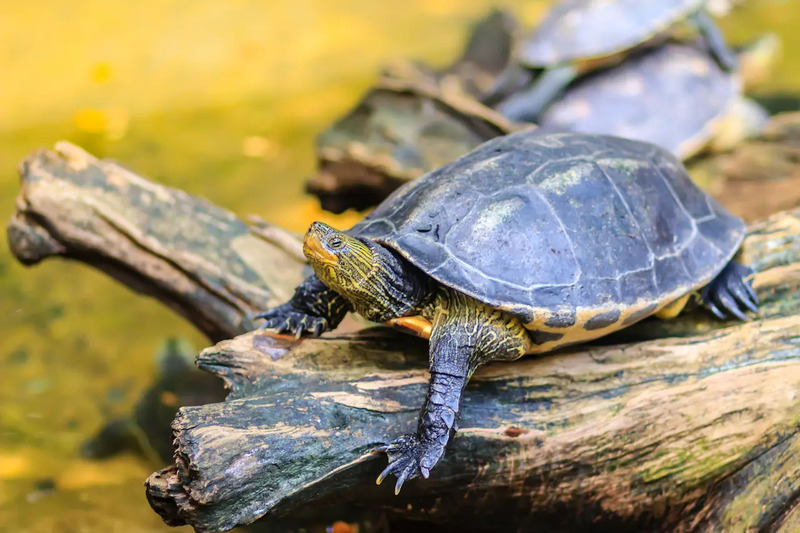In the fiercely competitive arena of nature, every animal has its own way of survival. Some animals rely on the power of the group, some animals use peculiar body structures, and some animals rely on unique attack and defense methods to show their heroic style in crises. Today, we will get close to several amazing "brave fighters" and feel their wisdom and tenacity.


Musk oxen, living in the cold Arctic, are low-key but majestic fighters. They are covered with thick long hair, which can withstand the severe cold of the polar regions and become unyielding guardians in the ice and snow. Musk oxen's group defense strategy is a masterpiece of nature: when a blizzard or predator strikes, adult musk oxen form a circle to protect their young in the center, while using their broad bodies to resist the biting cold wind.

During the estrus period, male musk oxen secrete musk-scented gas from their orbital glands to attract females; females can only breed the next generation of young every other year. Musk oxen's newborn young show amazing adaptability from birth and can stand and walk within 1 hour. Musk oxen are masters of energy conservation, requiring only one-sixth of the food of ordinary cattle. They can even rest and digest while eating, and have survived tenaciously in the harsh polar environment for hundreds of thousands of years.


Fringed lizards, also known as "cloaked lizards", live in arid grasslands and scrublands in northern Australia and southern New Guinea. Their signature feature is the umbrella-shaped membrane on their necks. When threatened, the lizard will quickly open this shiny "cloak" to make the enemy mistakenly think it is larger and more threatening than it actually is, thereby effectively scaring off the opponent.

Fringed lizards are not only masters of defense, but also excellent predators. They feed on insects, small reptiles, and sometimes even prey on lizards smaller than themselves. Fringed lizards also have a special way of reproduction. After mating once, females can preserve sperm for several years and lay fertilized eggs at the right time. The image of the frilled lizard is so well-known that it is even printed on Australian coins, becoming a symbol of local biodiversity.


In Brazil, South America, the three-banded armadillo is a fighter known for its defense. When facing natural enemies, it quickly curls up into a hard ball and protects its soft abdomen with bony scales. This simple but extremely effective strategy makes it impossible for many predators to bite.

The flexibility and adaptability of the three-banded armadillo are also impressive. They use sharp claws to dig nests and move freely between the ground and underground. The three-banded armadillo is not only an important part of the ecosystem, but also attracts the attention of countless researchers with its unique appearance and behavior.


Skunks may be one of the most notorious animals in the world, but they have become nature's "chemical fighters" with the stench secreted by their glands. When threatened, skunks will quickly turn around, stand on their hind legs and fire stinky liquid. This secretion is not only strong in smell, but can also blind the enemy for a short time, which can be called a "killer weapon" in defense.

Skunks are gentle and active in a variety of environments such as woods, plains and deserts in North America. Their nocturnal lifestyle and omnivorous eating habits make them an important role in controlling the number of rodents and insects. However, since skunks are also the main carriers of rabies, people pay special attention to their prevention research.


The giant ground pangolin is the largest member of the pangolin family, with a body length of up to 1.8 meters. They are covered in thick scales, and when threatened, they curl up into a ball like an armadillo, using their sharp scales to scare off predators. Giant ground pangolins are not only masters of defense, but also natural enemies of ants. They make a living by digging termite nests, and will not even let go of larvae and eggs.

However, due to the interference of human activities, the survival of giant ground pangolins is in jeopardy. Their scales are regarded as "treasures" by illegal hunters, which has caused their population to drop sharply. Today, protecting pangolins has become an important issue in global ecological protection.


Sea cucumbers, seemingly inconspicuous echinoderms, have amazing survival wisdom. When encountering natural enemies, some aquarium/sea-cucumbers.html">sea cucumbers will eject their internal organs as "bait" to divert the enemy's attention and take the opportunity to escape. This "self-sacrifice" strategy fully demonstrates their unique role in the marine ecosystem.

Sea cucumbers are of various species and widely distributed around the world. They are an important part of the marine food chain. Their flexible body walls and rich regeneration ability make them unique in nature.


The yellow-margined box turtle, known as the "shell-closing turtle", is a low-key but powerful defense expert. When in danger, it will retract its body into its shell and completely seal itself with its hard carapace. This unique defense method allows them to repeatedly escape danger from predators.

The yellow-margined box turtle is mainly distributed in the mountainous areas of southern China, but its population has dropped sharply due to habitat destruction and illegal capture. In order to protect this precious species, several nature reserves have been established one after another.

These "brave fighters" have occupied a place in nature with their unique defense and attack strategies. They not only show the diversity and wisdom of life, but also remind us that every creature on the earth has its indispensable value. Under human interference, many species are facing a survival crisis. Protecting these "fighters" is not only a respect for nature, but also a commitment to the future.
animal tags:
We created this article in conjunction with AI technology, then made sure it was fact-checked and edited by a Animals Top editor.